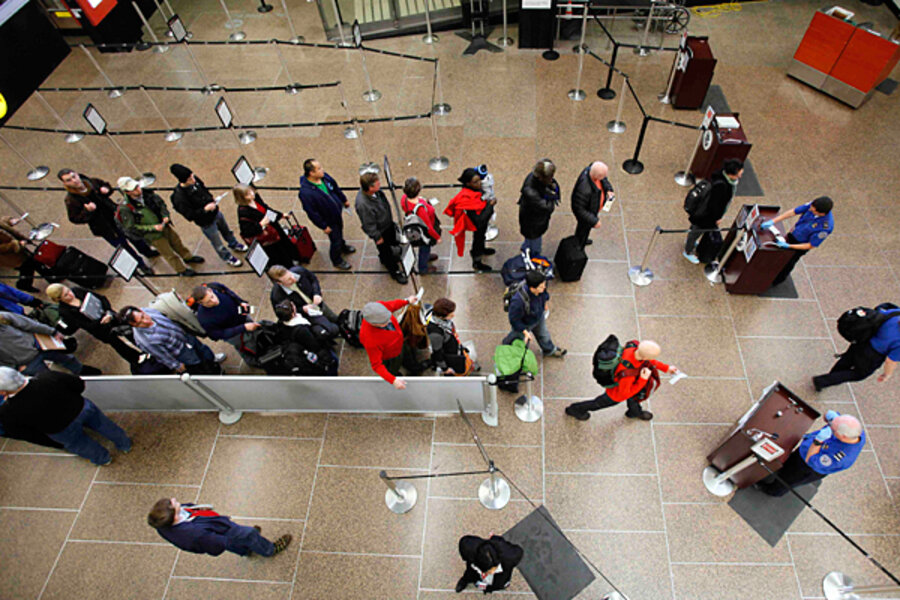Has Al Qaeda made air travel more dangerous?
Loading...
| Boston
The 9/11 attacks changed air travel, perhaps for ever.
"No fly" lists that saw famous Muslims like Yusuf Islam (aka Cat Stevens) prevented from boarding airlines, longer and more thorough security checks, and questioning from airline agents proliferated globally. Richard Reid, the would-be shoe bomber forced us all to take our shoes off. Now, the would-be underwear bomber Omar Farouk Abdulmutallab is likely to force many of us to be virtually undressed.
But with the 9/11 attacks factored in, how much worse was the past decade for attacks on civilian aviation? Well, pollster and statistician Nate Silver, whose blog typically analyzes US political polling data, took the time to crunch the numbers. His answer is that – if you count passenger deaths alone – the last decade wasn't worse at all. It was better.
Using data from planecrashinfo.com he found that "passenger violence" on commercial flights led to 469 fatalities amongst passengers, crew, and attackers in the 2000s (265 of these deaths were on 9/11). That was slightly worse than the 1990s, when onboard violence led to just under 400 fatalities, but much better than the 1980s when over 1,400 people were killed in such incidents, or in the 1970s, when just over 800 people were killed.
That's just the raw data. But Silver's analysis gets much more interesting when he accounts for the dramatic increase in commercial air travel since the 1930s, coming up with the number of fatalities per 1 billion flights taken. This approach, which generates comparable data (so called "apples to apples") yielded a rather astounding finding: That the most dangerous decade to fly was the 1930s, with 616 fatalities. The 1940s came second with 242 fatalities and then the number hovered between 100 and 200 per decade until the 1990s, with 22 commercial airline fatalities per 1 billion passengers. The 2000s also had 22 fatalities per billion, making the past 20 years the safest from terrorism for commercial airline passengers.
People have always feared flying, but since 9/11, anxiety about death in the skies has soared. As Maia Szalavitz wrote for Psychology Today in 2008, fear led over a million Americans to travel by car rather than fly for holiday vacations at the end of 2001, notwithstanding the fact that driving is more dangerous statistically."Because fear strengthens memory, catastrophes such as earthquakes, plane crashes, and terrorist incidents completely capture our attention,'' she wrote. "As a result, we overestimate the odds of dreadful but infrequent events and underestimate how risky ordinary events are. The drama and excitement of improbable events make them appear to be more common."
To be sure, the statistics are cold comfort to those who lost their friends and family on 9/11 or in other airplane attacks. Silver's analysis excludes those on the ground killed by aircraft, such as the 2,700 people killed by the 9/11attacks. But the next time you get annoyed at being asked to fish a dime sized piece of tin-foil from your pocket or take the battery out of your computer, take and deep breath and remember: Your trip is probably going to be even safer than in the 2000s, the safest decade from in-flight terrorism on record.





